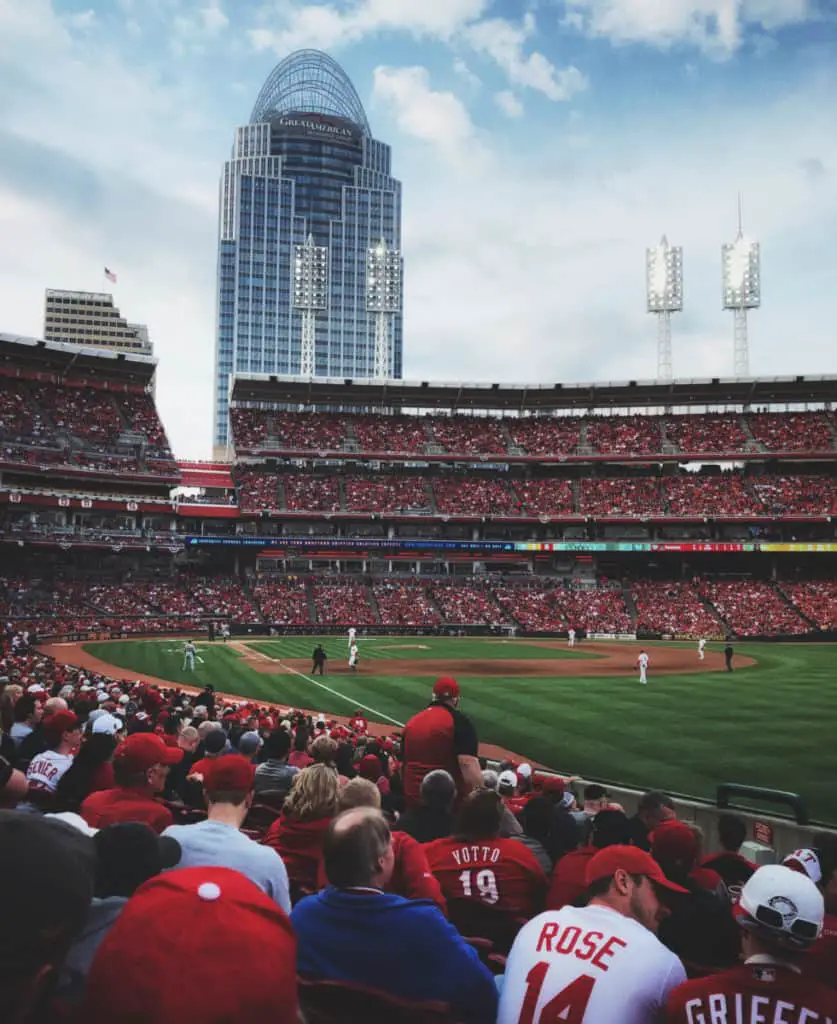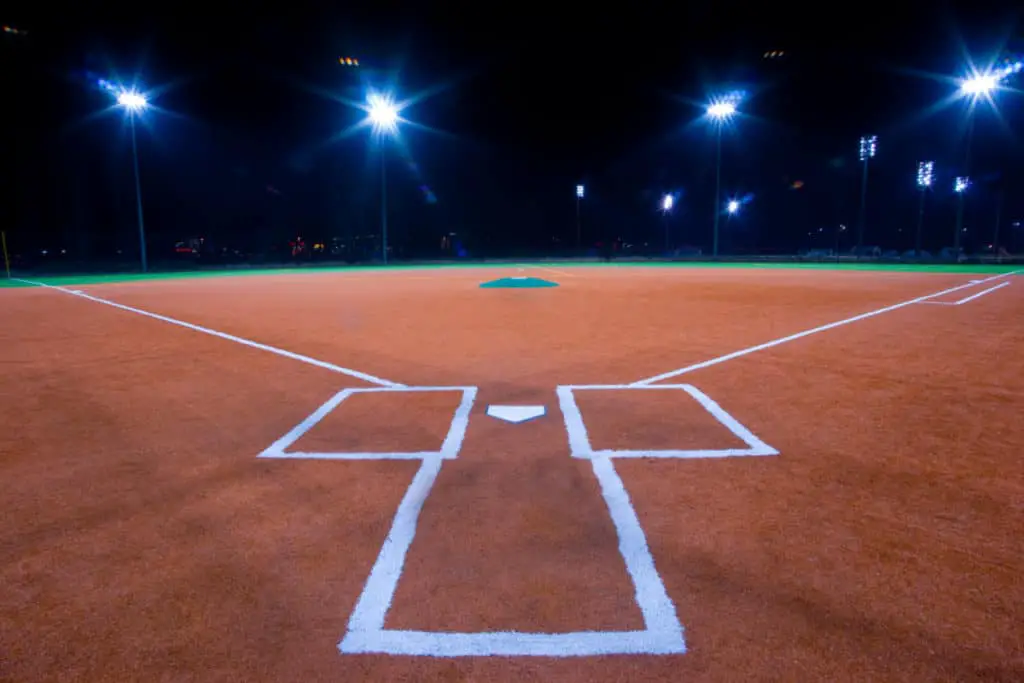Baseball is America’s pastime, a game that is played all over the world, at all ages. Baseball is enjoyed by people of all backgrounds, a game that is competitive and has such a great history.
Baseball follows many of the same rules and this is very standard, but are the fields all the same?
Are All Baseball Fields the Same Size?
Baseball fields are not all the same size. The dimensions of baseball fields definitely are different at each level, but they are also much different even within the same level of play.
Baseball dimensions vary from park to park. The Major League Baseball dimensions are much different depending which city and park a baseball game is being played in.
Youth baseball is extremely popular, and these fields also have a wide range of dimensions from park to park. There are different factors that influence the size of baseball fields.

What Factors Influence the Size of Baseball Fields?
There are different factors that cause fields to have certain dimensions. We will take a look at the different factors for each level of baseball.
Youth Baseball
At the youth levels of baseball there are several different factors that determine the size of the fields. If you travel around the country to play, watch, or coach baseball, you will notice that there are different sized fields.
1- Dimensions of the infield
This factor is probably the biggest reason why baseball fields are designed the way they are. Although some youth baseball games can be played on open fields or fences that are very deep, the most common way to design a youth baseball field is to have fences that aren’t that deep.
Making the fences shorter than a Major League ballpark make the youth baseball game that much more interesting. It also allows for youth to make more plays on defense.
2 – Fences are Designed to Make the Game more Enjoyable Defensively
In youth baseball, defenders are younger and not as athletic. The baseball does get hit into gaps often. On open fields or fields that have long fences, defenders must run a long distance to track the ball down. This becomes a daunting task for outfielders.
When a baseball is hit into the gap, the defender can legitimately make a play on the ball if the fences are reasonable in length. This makes hitting a triple or an inside the park homerun not as common at this level.
3 – The Age Group that is Competing
Youth baseball ranges from ages 7-14, and following 14 years of age, the players are typically considered high school baseball players.
At the age of eight, children are just beginning to learn the game of baseball, so having fences that are adjusted accordingly can make the game much more enjoyable, both offensively and defensively.
As youth baseball players begin to grow up, the fields can change drastically.
Field Dimensions from Ages 7-14
Ages 7-10
These fields can typically range from 150 feet to 170 down the foul lines. Sometimes these fields can be the same dimensions all the way around the field, but sometimes in center field they can get deeper. Either option is a valid option for baseball fields.
Ages 11-12
The fields at this level typically are a little bit deeper than the previous age group. At this age, down the foul lines are typically not shooter than 190 feet. Once again, some fields will stay the same dimension all the way around, while others will change dimensions as the fence goes round the field.
Ages 13-14
This age group typically is preparing players to enter the next level of play, which is high school baseball. The fences typically should not be shorter than 240 feet down the foul lines. These fields can also change dimensions as the fence works around the field, but sometimes are the same dimensions all the way around.
High School Baseball Field Sizes
High school baseball fields are pretty comparable to Major League fields, but are sometimes shortened a bit.
A shorter high school baseball field may be 300 feet down the lines and get to about 350 in center field. This actually makes for a good high school baseball game.
High school baseball rules have really made the equipment not at dynamic and there are not a lot of homeruns hit at the high school level.
Major League Baseball Sizes
In 1958 there was a rule that stated that Major League baseball fields must have at least 325 feet from home plate to the nearest part of the fence. The average center field fence is around 400 feet.
Each Major League part is different, no two fields are the same. The different dimensions give each field character and uniqueness.
What are the Other Dimensions on a Baseball Field?
High School, College, and Pro Baseball Field Dimensions
- Baseline — 90 feet
- Home plate to second base — 127 feet 3 3/8 inches
- Home plate to front of pitching rubber — 60 feet 6 inches
- Infield arc radius — 95 feet
- Home plate to backstop — 60 feet
- Foul lines — 325 feet minimum to outfield fence
- Center field fence— 400-plus feet
What is the Biggest Major League Ballpark?
Chase Field (Arizona Diamondbacks)
The biggest and probably the most difficult to hit homeruns is Chase Field, home of the Arizona Diamondbacks. The power allies in left-center and right-center are 374 feet, but immediately to the centerfield direction, the fence is 413 feet from home plate.
There is also a high wall in center field, making this field the most difficult to hit homeruns.
What is the Smallest Major League Ballpark?
Great American Ballpark (Cincinnati Reds)
There are a lot of homeruns hit at Great American Ballpark. The power allies measure 389 feet, but besides for the fence in left field, the walls are daily short. The ball seems to fly out of this field.
Extra bases are a little more difficult to come by at this park as outfielders are able to track the ball down quickly because of the shorter power allies.
What is the Oldest Major League Ballpark?
Fenway Park (Boston Red Sox)
Fenway Park opened in 1912 and is still operating today. Fenway has a capacity of 37,755 and is mostly known for its 37 foot green monster in left field.
Fenway is not a big park, mostly because of the age of the park.

Final Thoughts
The dimensions of baseball fields depend on several factors, but mostly on the level of play. Youth baseball is the most varied field sizes, and the bases vary as well from age-to-age and association to association.
High school, college, and the major leagues have more similar dimensions. The reason for this is because the other dimensions are the same as well. The pitcher’s mound and bases are exactly the same from high school to the professional level.
Although no two fields are the same, they all bring a unique feel to them, whether it is the amount of people in the stands, or the amount of homeruns that are hit on any given night.
Many people love to travel the country and see different ballparks, each with its own feel and character.
